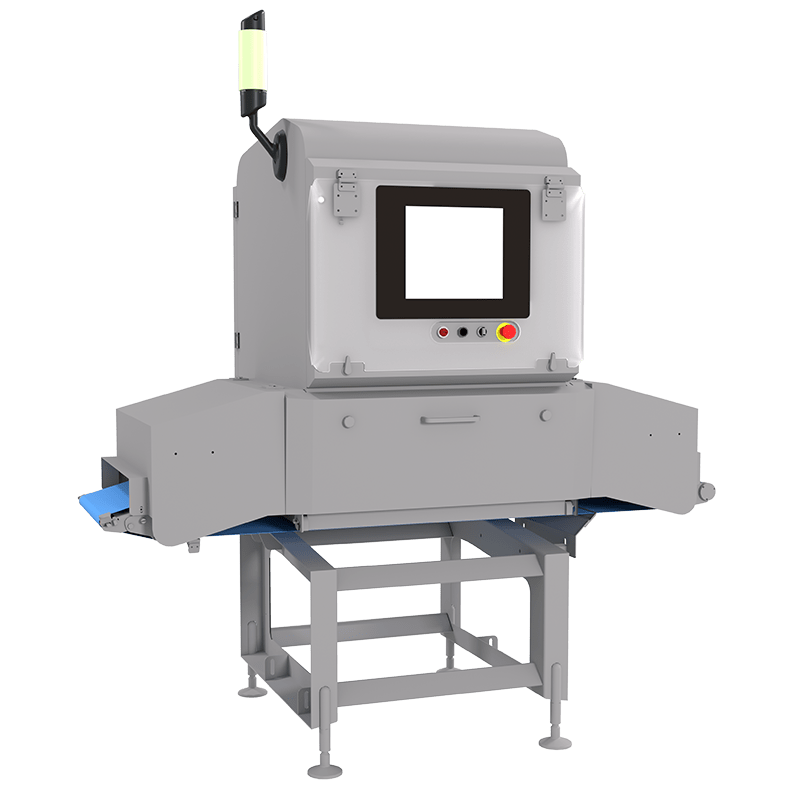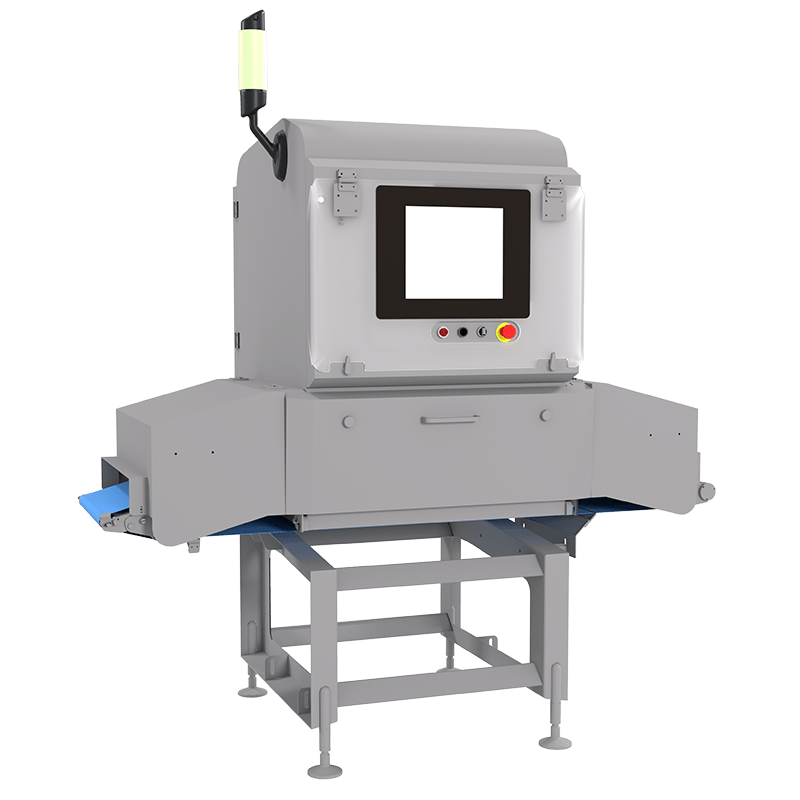Bone-in-Meat Risk: The Million-Dollar Cost of a 1 mm Oversight
1. The Economics of a Single Bone Fragment
Event | Direct Cost | Indirect Cost |
Consumer injury lawsuit | $100K–$1M | Brand damage |
Product recall (10K lbs) | $50K–$200K | Retailer penalties |
Regulatory fine | $10K–$500K | Audit frequency ↑ |
Total per incident | $500K–$2M+ | Years of lost trust |
In 2024, a major U.S. poultry brand recalled 1.2 million lbs over bone fragments. Cost: $3.8 million. Root cause: standard X-ray missed 0.8 mm shard.
2. The Detection Gap = The Profitability Gap
Metric | Traditional X-Ray | Modern Integrated System | Annual Delta (100K lbs/day) |
Bone Miss Rate | 1 in 1,000 | 1 in 20,000 | −4,500 lbs contaminated |
False Rejection | 2–5% | 0.5–1% | +$120K–$300K saved |
Recall Risk | 1–2/year | <1/5 years | −$1M–$3M avoided |
3. Why Chicken and Red Meat Are High-Risk Categories
Chicken:
· Volume: 9 billion broilers/year (U.S.)
· Bone structure: Hollow → brittle → sharp
· Detection blind spot: Density match with meat
Red Meat:
· Thickness: 100–150 mm cuts
· Stacking: Conveyor efficiency → signal loss
· Surface noise: Marbling mimics bone
4. The Technology That Closes the Gap
Capability | Business Impact |
Dual-Energy Contrast | Detects bone in 150 mm beef |
0.5 mm Resolution | Catches pediatric choking hazards |
AI Noise Filtering | Cuts false rejects by 70% |
5. ROI Calculation Framework
Input:
- Daily throughput: 100,000 lbs
- Avg. product value: $4/lb
- Current false reject rate: 3%
- Current miss rate: 1/2,000
Savings:
1. Reduced waste: 3% → 0.75% = 2.25% × $400K/day = $9,000/day
2. Avoided recall: 1 → 0.2/year = 0.8 × $2M = $1.6M/year
3. Total annual benefit: $4.9M
Payback: <3 months
6. Strategic Implementation Roadmap
Phase | Action | Owner |
Phase 0 | Risk audit (current miss rate) | QA |
Phase 1 | Pilot on highest-value line | Engineering |
Phase 2 | Scale to 3 lines | Operations |
Phase 3 | Supplier certification program | Procurement |
7. The C-Suite Imperative
Residual bone risk is not a QA issue—it is a P&L issue. Every 1 mm fragment missed is a $1M+ liability in waiting.
Leaders must own this risk at the strategic level, aligning QA investments with financial outcomes. Treating detection gaps as isolated operational failures underestimates systemic exposure. Integrating advanced inspection technology and data-driven accountability across engineering, operations, and procurement ensures cost avoidance at scale. The board should demand transparency on miss rate metrics, treating them with the same rigor as revenue or margin indicators. Only then can preventive measures shift from reactive compliance to proactive value protection, safeguarding both brand integrity and bottom-line performance.

Related Articles
-
 Nov-07-2025
Nov-07-2025Engineering Residual Bone Detection: From X-Ray Physics to Line Integration
Engineering Residual Bone Detection: From X-Ray Physics to Line Integrationlearn more -
 Nov-07-2025
Nov-07-2025Why Residual Bones Remain a Top Food Safety Risk in Modern Processing
Why Residual Bones Remain a Top Food Safety Risk in Modern Processinglearn more

Quick Links
Contact
Tel: 717-490-1513
Add: 1050 Kreider Drive -
Suite 500, Middletown,
PA 17057







